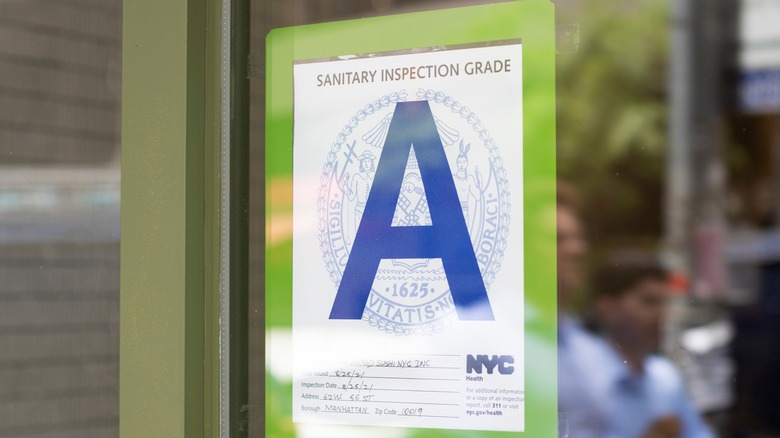What Health Inspection Grades Actually Mean At Restaurants
For restaurants, there are few things as daunting as a looming health inspection. Health laws will differ from municipality to municipality, although all states must have food codes that abide by federal policies. For examples, New York's strict grading system runs by letter ranking and is typically upheld twice annually by the Department of Health. An A indicates near-perfect conditions, B suggests a venue has a few minor issues, while C represents a restaurant with such severe violations that it risks closure. On the other hand, Florida operates alternative processes, with one annual inspection and marks displayed online. For consumers, these three grades are easy to interpret, and businesses must display results in their windows for full transparency.
Behind the scenes, though, the procedure is much more complex. The criteria goes further than your average food safety tips for home-cooking, factoring in aspects like the quality of food sources. Inspectors mostly rate restaurants on a 0 to 100-points scale, considering effectiveness of sanitization practices, cooking temperature, and whether they've bought meats from USDA-approved outlets. Officials then cross-compare the total number of points accrued against band boundaries to finalize their decision on a venue's earned grade. In New York, for example, they must score 14 points or less to get an A, signaling very few concerns. If a business scores a lower B or C, they risk fines or closure.
What steps must restaurants take before an inspection?
Restaurants don't just become immediately eligible for a review. First, a food business must receive an officially awarded Grant of Inspection. To obtain this, it must already possess Sanitation Standard Operating Procedures (SSOP) and a Hazard Analysis and Critical Control Plan (HACCP). Think of this step as the small tests required before the final exam. By ensuring venues are fully prepared to be inspected, it saves valuable time and funding resources. The last thing inspectors want is to arrive and find a chef unsure of the exact definition of room temperature. Knowing the correct temperatures to cook different types of steak is one thing, but upholding pristine safety standards requires a whole other level of education.
The process also involves interviewing. Part of preparing for food health inspections is about employee training; there's no guaranteeing that the newly onboarded wait staff won't be asked about something like cross-contamination. The whole team's understanding of upholding culinary standards needs to be watertight to maximize the chances of achieving higher grades. The good news for consumers is that this thorough approach translates to trustworthy ratings.

